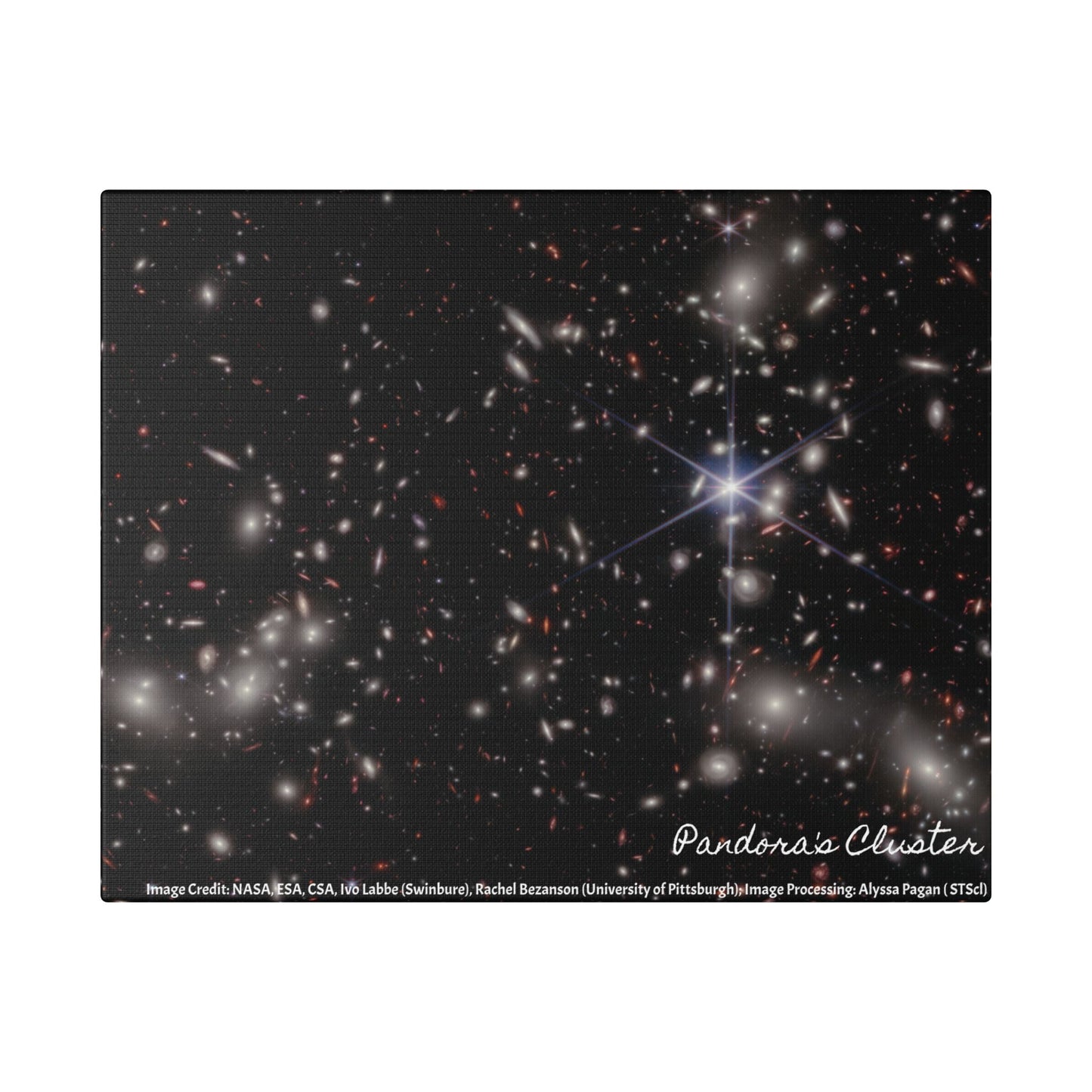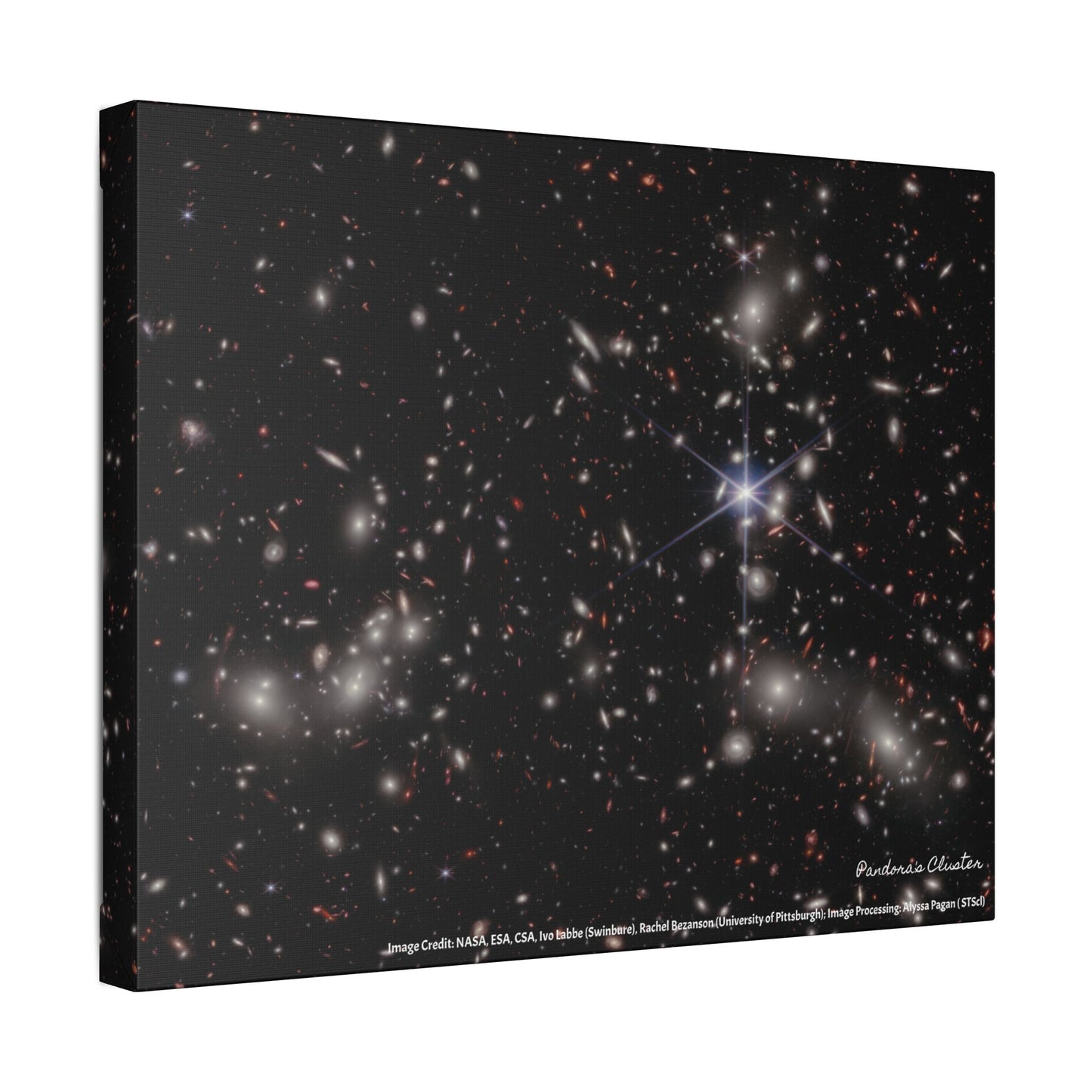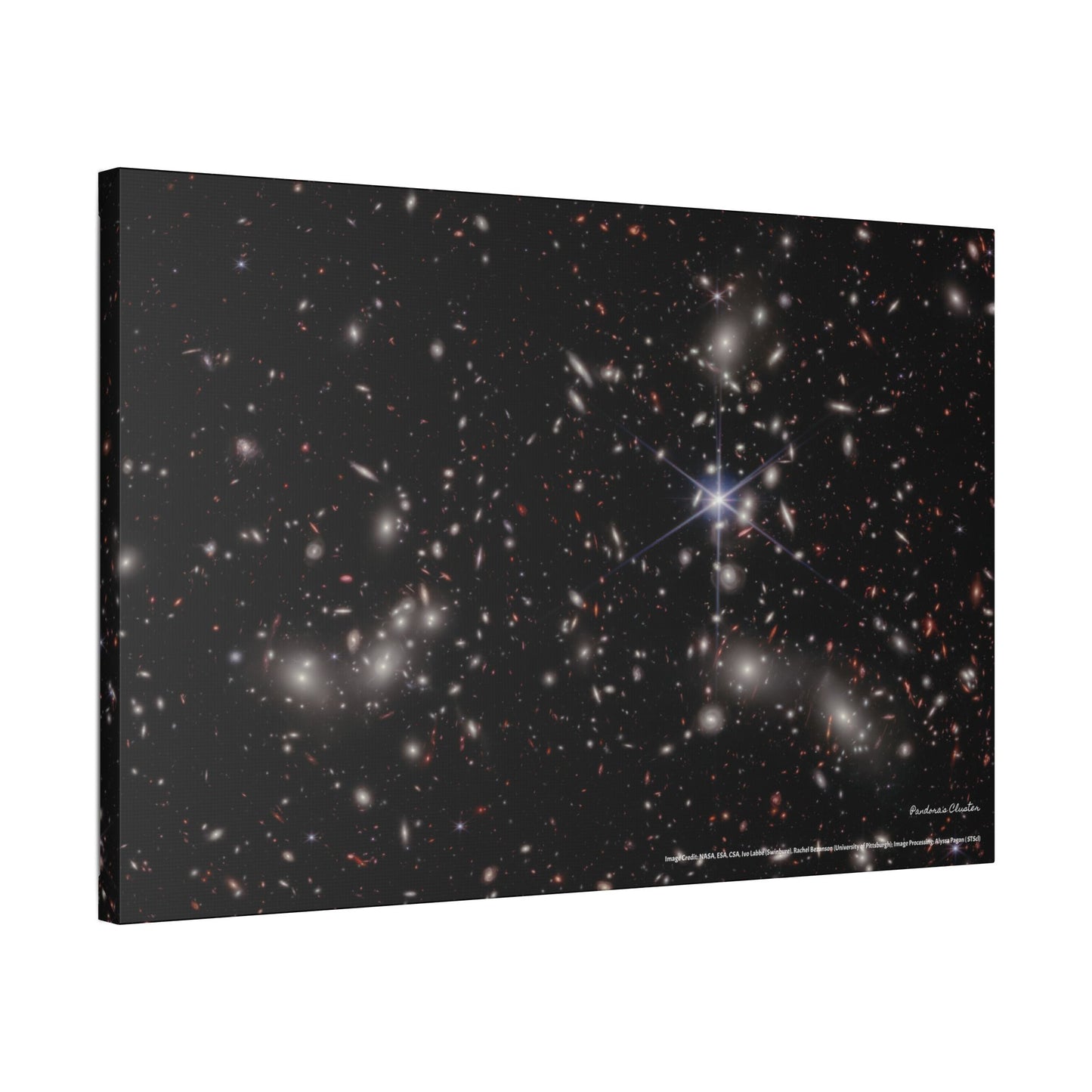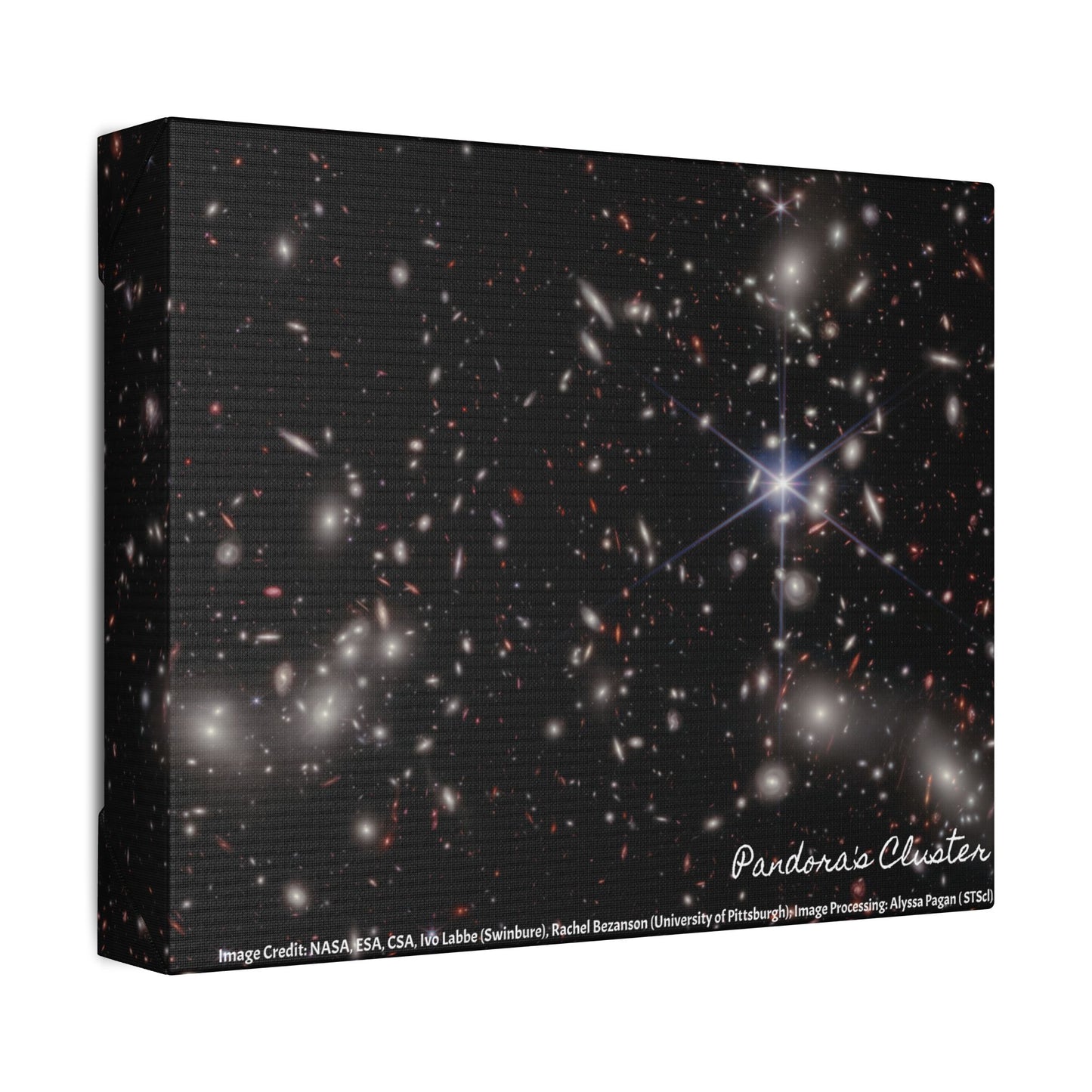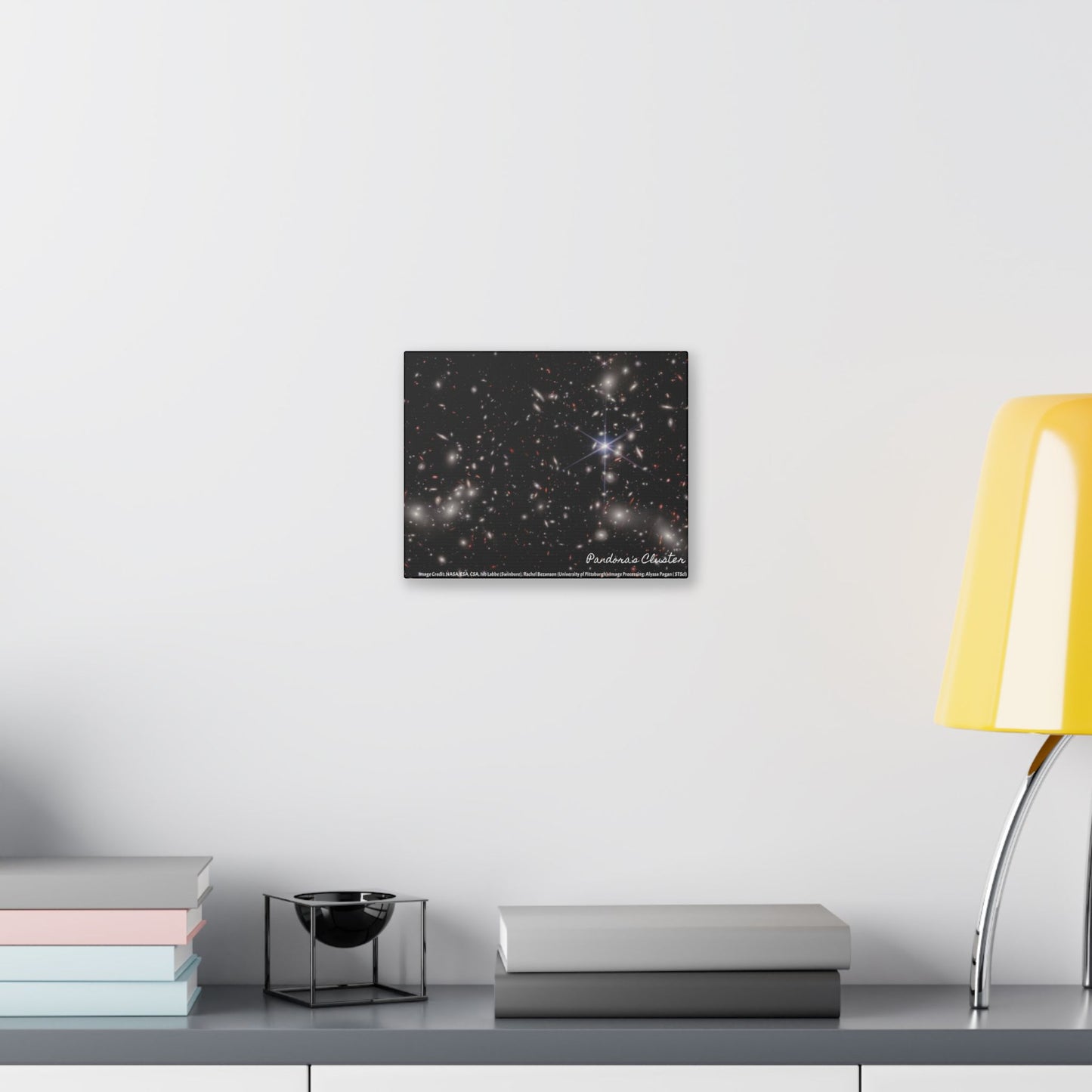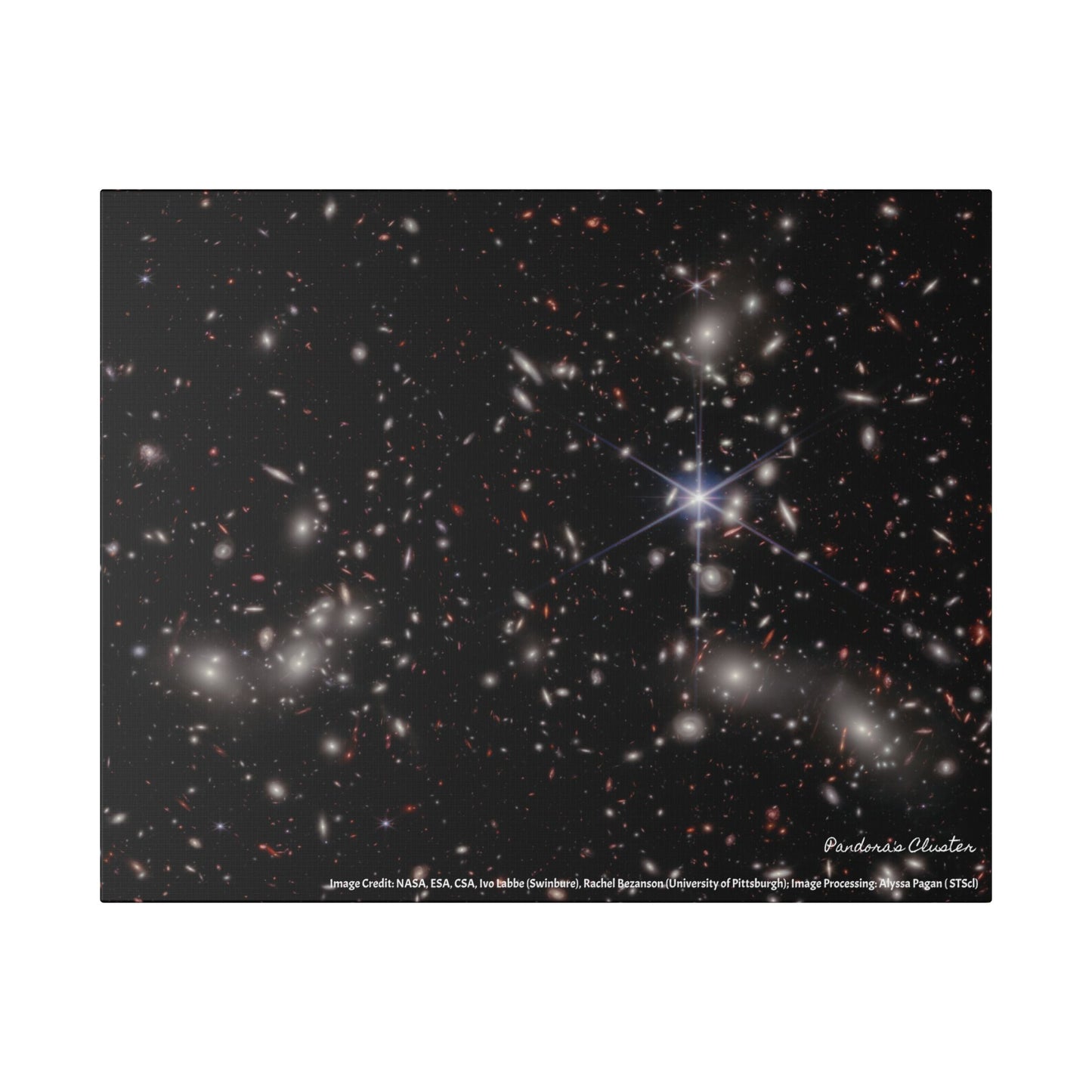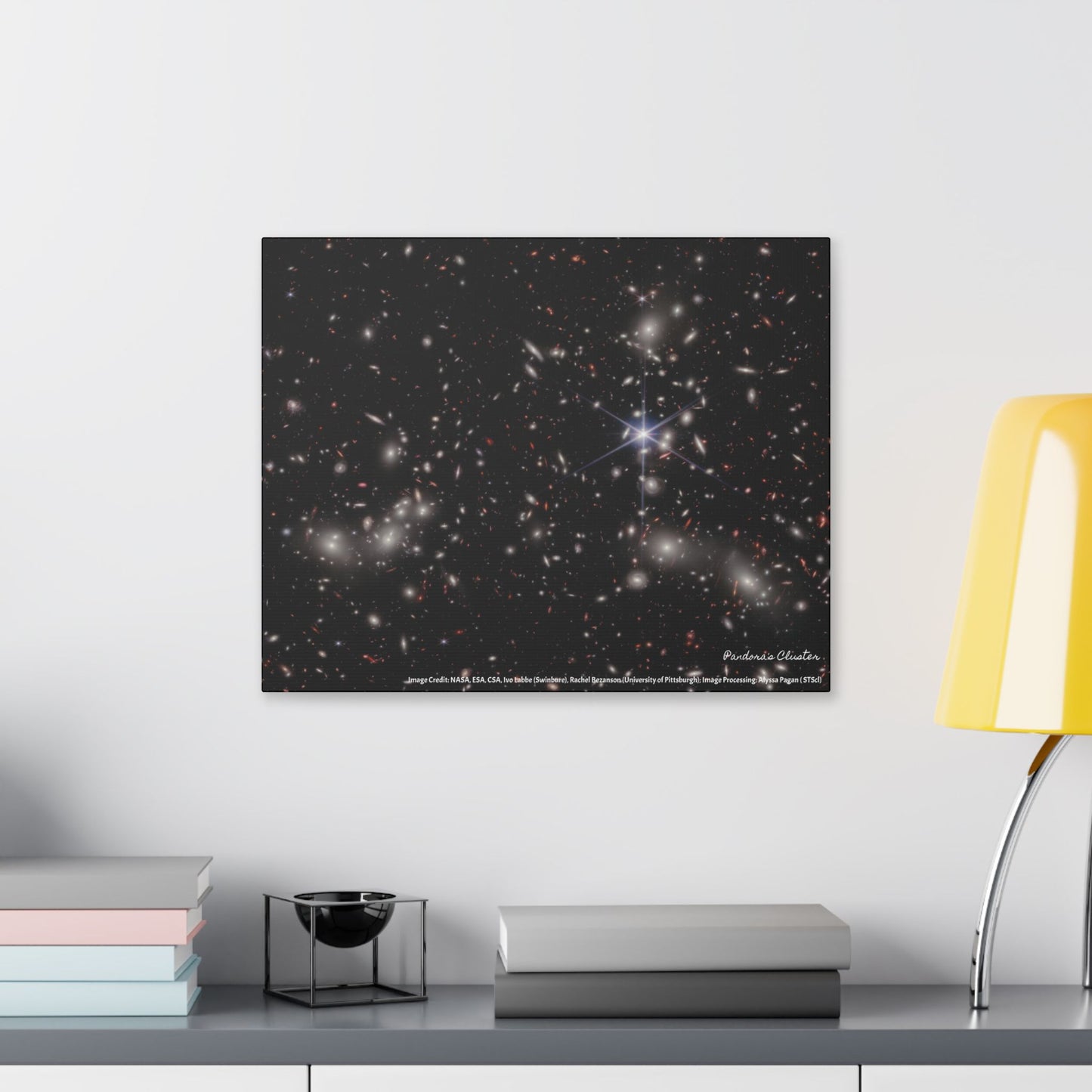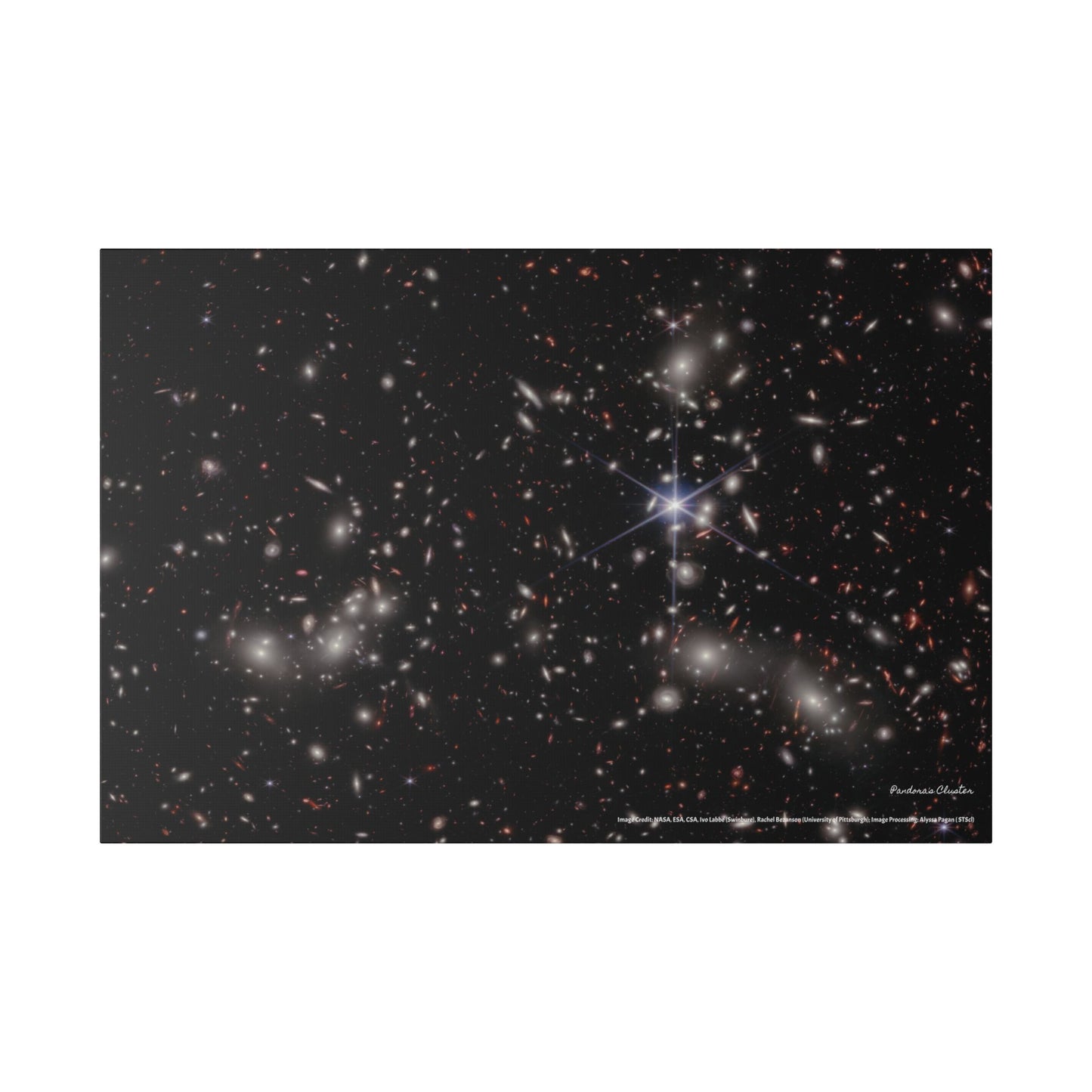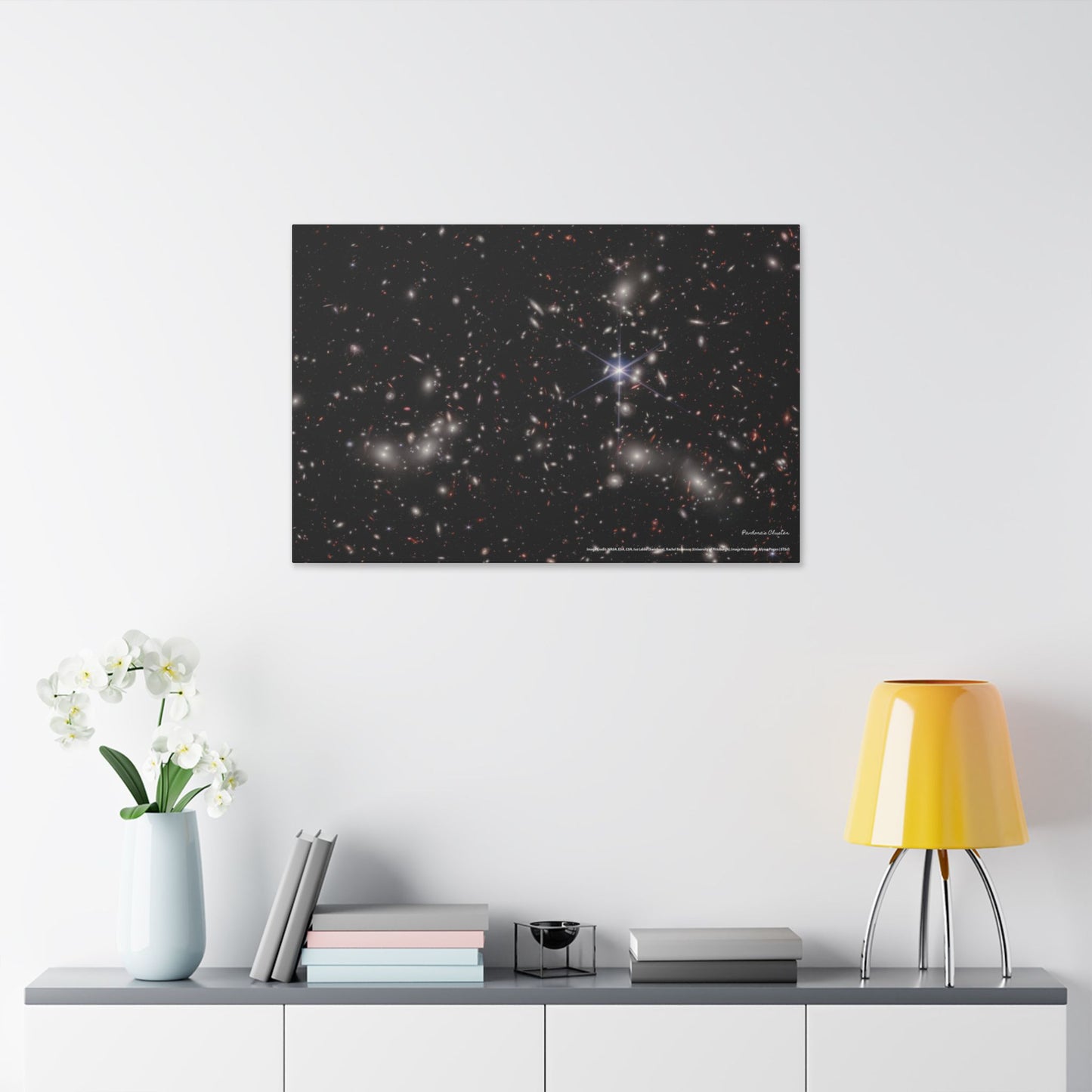Pandora’s Cluster, Canvas Wall Art
Pandora’s Cluster, Canvas Wall Art
Couldn't load pickup availability
Elevate Your Space with Quality Canvas Art
Transform your home or office into a sophisticated haven with our stunning collection of canvas art prints. Each piece is meticulously crafted using top-tier materials and cutting-edge printing techniques to deliver exceptional clarity, detail, and vibrancy.
Please note that these canvas art prints are created for exquisite indoor display.
Invest in lasting beauty. Shop for our canvas art collection today.
Pandora’s Cluster:
Astronomers estimate 50,000 sources of near-infrared light are represented in this image from NASA’s James Webb Space Telescope. Their light has travelled through varying distances to reach the telescope’s detectors, representing the vastness of space in a single image. A foreground star in our own galaxy, to the right of the image center, displays Webb’s distinctive diffraction spikes. Bright white sources surrounded by a hazy glow are the galaxies of the Pandora’s Cluster, a conglomeration of already massive clusters of galaxies coming together to form a megacluster. The concentration of mass is so great that the fabric of spacetime is warped by gravity, creating an effect that makes the region of special interest to astronomers: a natural, super-magnifying glass called a “gravitational lens” that they can use to see very distant sources of light beyond the cluster that would otherwise be undetectable, even to Webb.
These lensed sources appear red in the image, and often as elongated arcs distorted by the gravitational lens. Many of these are galaxies from the early universe, with their contents magnified and stretched out for astronomers to study. Other red sources in the image have yet to be confirmed by follow-up observations with Webb’s Near-Infrared Spectrograph (NIRSpec) instrument to determine their true nature. One intriguing example is an extremely compact source that appears as a tiny red dot, despite the magnifying effect of the gravitational lens. One possibility is that the dot is a supermassive black hole in the early universe. NIRSpec data will provide both distance measurements and compositional details of selected sources, offering a wealth of previously inaccessible information about the universe and its evolution over time.
Constellation Sculptor
Distance 3.5 billion light-years to the cluster
Exposure Dates 2 Nov 2022, 15 Nov 2022
Image: NASA, ESA, CSA, Ivo Labbe (Swinburne), Rachel Bezanson (University of Pittsburgh); Image Processing: Alyssa Pagan (STScI)Image: NASA, ESA, CSA, STScI, Klaus Pontoppidan (NASA-JPL), Joel Green (STScI)
Share
